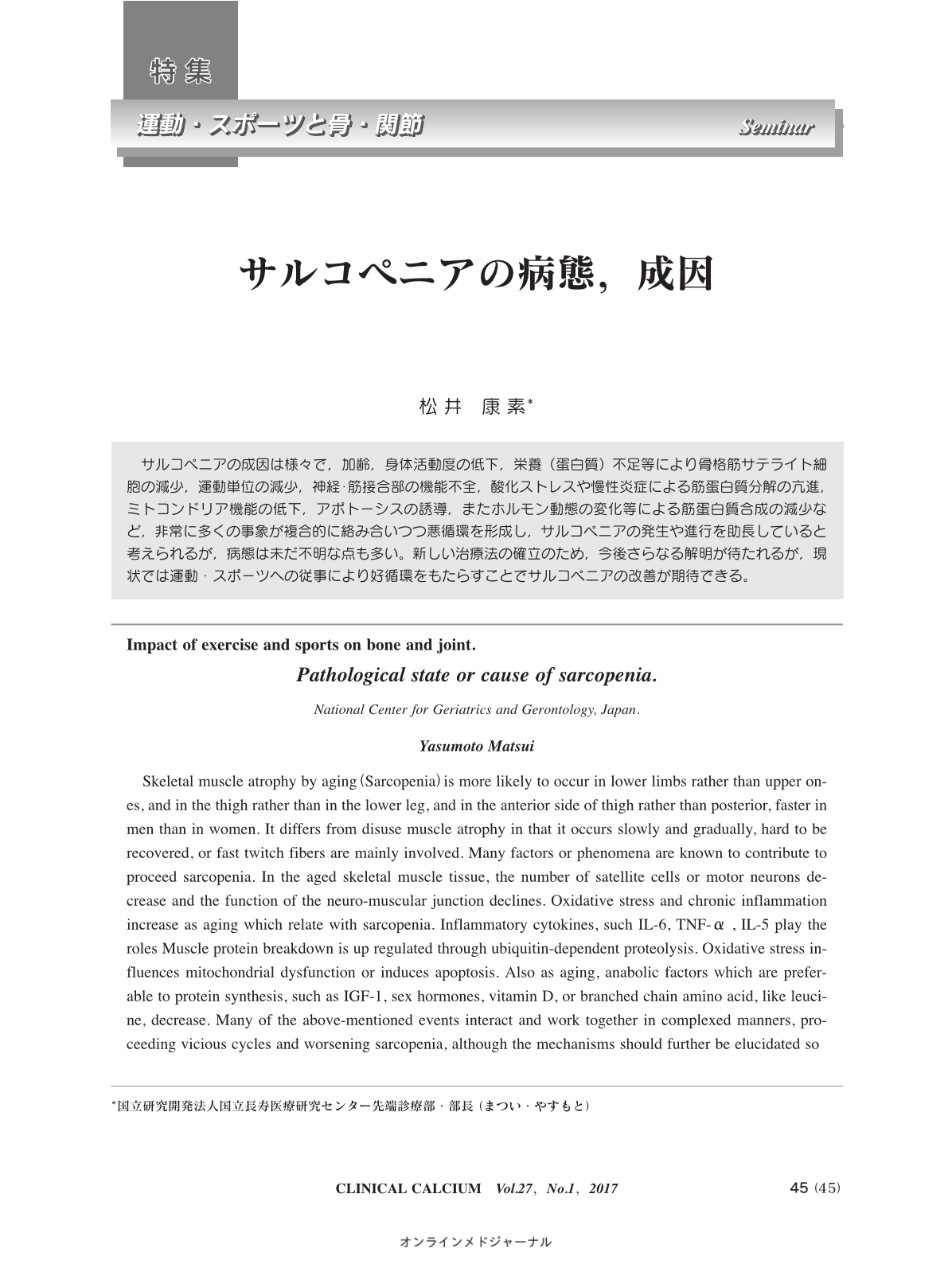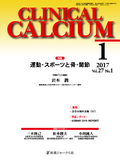Japanese
English
- 有料閲覧
- Abstract 文献概要
- 1ページ目 Look Inside
- 参考文献 Reference
サルコペニアの成因は様々で,加齢,身体活動度の低下,栄養(蛋白質)不足等により骨格筋サテライト細胞の減少,運動単位の減少,神経・筋接合部の機能不全,酸化ストレスや慢性炎症による筋蛋白質分解の亢進,ミトコンドリア機能の低下,アポトーシスの誘導,またホルモン動態の変化等による筋蛋白質合成の減少など,非常に多くの事象が複合的に絡み合いつつ悪循環を形成し,サルコペニアの発生や進行を助長していると考えられるが,病態は未だ不明な点も多い。新しい治療法の確立のため,今後さらなる解明が待たれるが,現状では運動・スポーツへの従事により好循環をもたらすことでサルコペニアの改善が期待できる。
Skeletal muscle atrophy by aging(Sarcopenia)is more likely to occur in lower limbs rather than upper ones, and in the thigh rather than in the lower leg, and in the anterior side of thigh rather than posterior, faster in men than in women. It differs from disuse muscle atrophy in that it occurs slowly and gradually, hard to be recovered, or fast twitch fibers are mainly involved. Many factors or phenomena are known to contribute to proceed sarcopenia. In the aged skeletal muscle tissue, the number of satellite cells or motor neurons decrease and the function of the neuro-muscular junction declines. Oxidative stress and chronic inflammation increase as aging which relate with sarcopenia. Inflammatory cytokines, such IL-6, TNF-α, IL-5 play the roles Muscle protein breakdown is up regulated through ubiquitin-dependent proteolysis. Oxidative stress influences mitochondrial dysfunction or induces apoptosis. Also as aging, anabolic factors which are preferable to protein synthesis, such as IGF-1, sex hormones, vitamin D, or branched chain amino acid,



